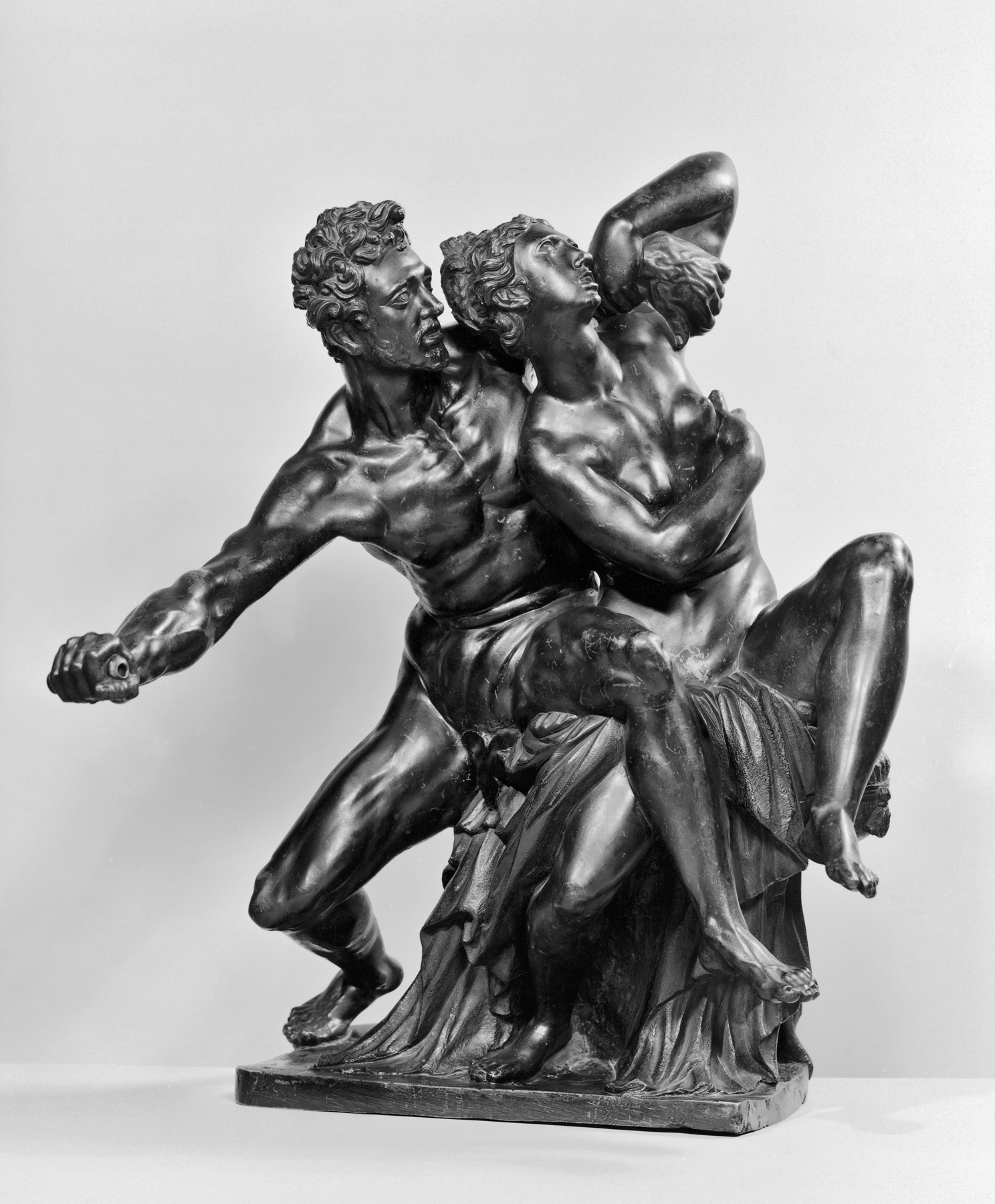Tarquinius Attacking Lucretia
(Baroque Europe )
The rape of Lucretia, a noble Roman matron known for her beauty and virtue, by the Etruscan prince Tarquinius (here, originally wielding a knife), was recounted by Roman authors as a pivotal event in their early history. After the rape, Lucretia committed suicide to save her father and brother from dishonor. As a result, outraged Romans overthrew their Etruscan rulers.
Hubert Gerhard was trained by his fellow Netherlander Giovanni Bologna in Florence but worked primarily for courts in Germany. The dramatic tension, vigorous muscularity, compositional complexities, and sensuality of Gerhard's style are distilled in the electric torsion of the male torso, from which the compositional rhythms flow. Most of Gerhard's bronzes are large, and none of the smaller ones associated with him is signed, so the attribution is hard to clarify. There are other fine casts of this popular piece in Cleveland and New York.
Provenance
Provenance (from the French provenir, 'to come from/forth') is the chronology of the ownership, custody, or location of a historical object. Learn more about provenance at the Walters.
Henry Walters, Baltimore, 1904 [mode of acquisition unknown]; Walters Art Museum, 1931, by bequest.
Exhibitions
| 1998-2001 | Highlights from the Collection. The Walters Art Gallery, Baltimore. |
| 1995 | The Allure of Bronze. The Walters Art Gallery, Baltimore. |
| 1993 | A Renaissance Puzzle: Heemskerck's Abduction of Helen. The Walters Art Gallery, Baltimore. |
Geographies
Austria, Innsbruck
(Place of Origin)
Germany, Munich (Place of Origin)
Measurements
22 1/2 in. (57.1 cm)
Credit Line
Acquired by Henry Walters, 1904
Location in Museum
Accession Number
In libraries, galleries, museums, and archives, an accession number is a unique identifier assigned to each object in the collection.
In libraries, galleries, museums, and archives, an accession number is a unique identifier assigned to each object in the collection.
54.662


